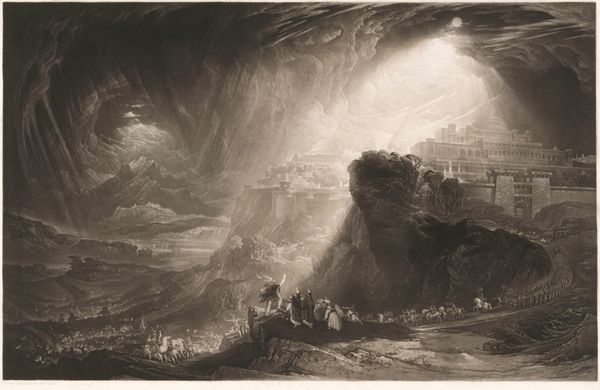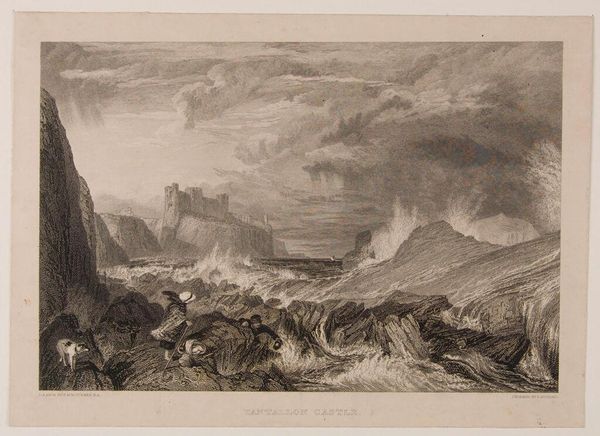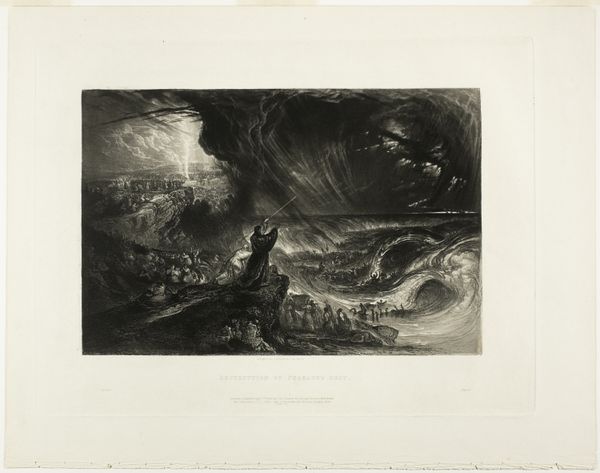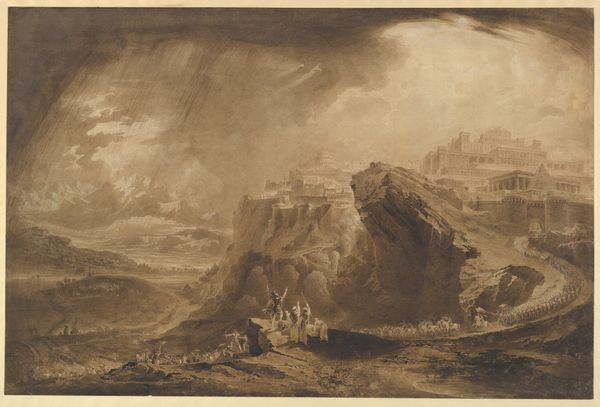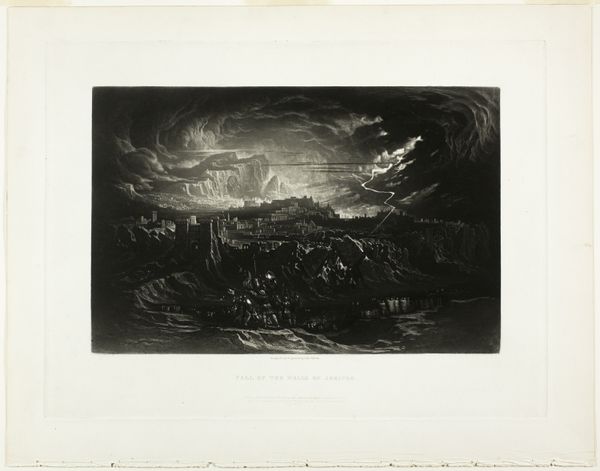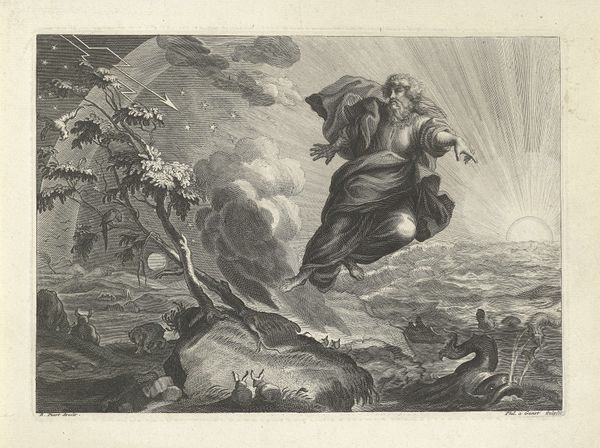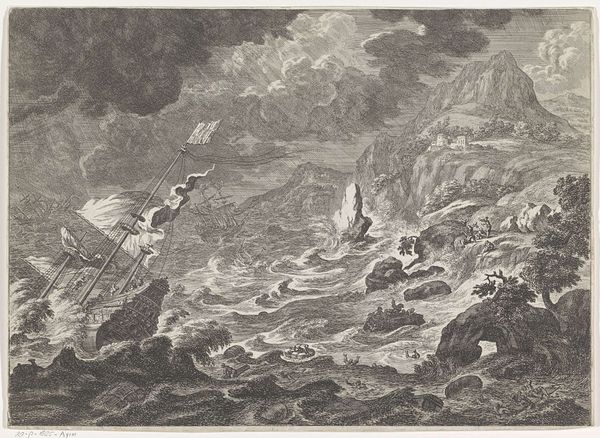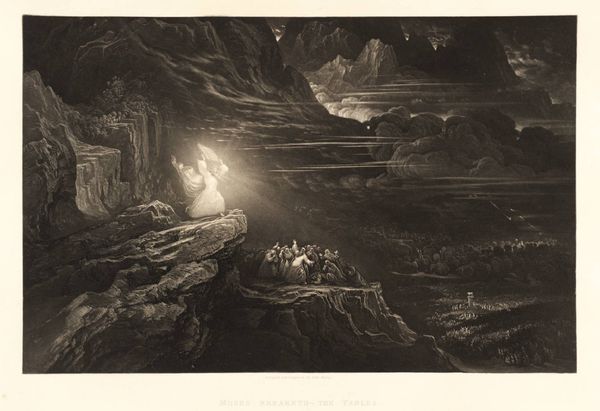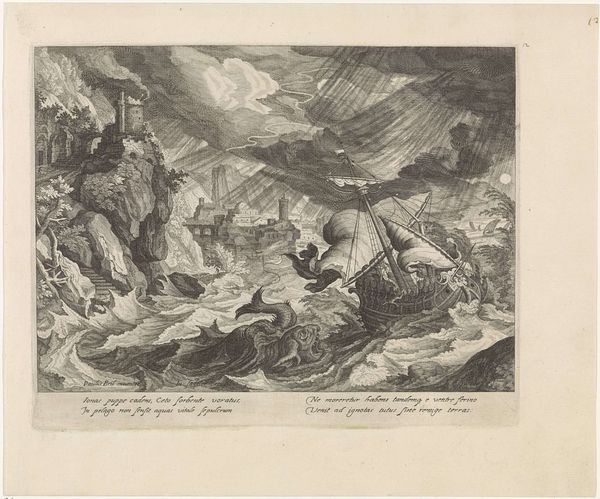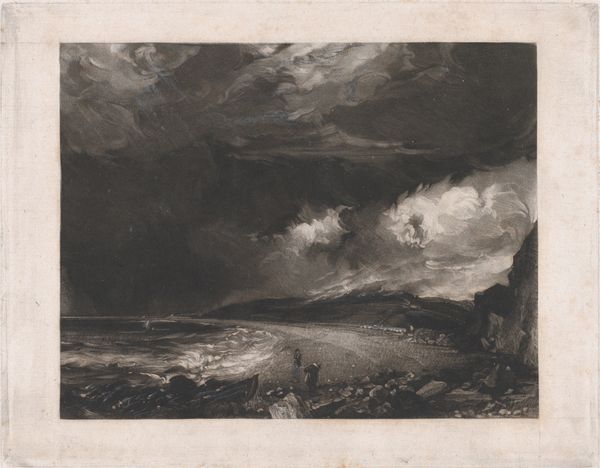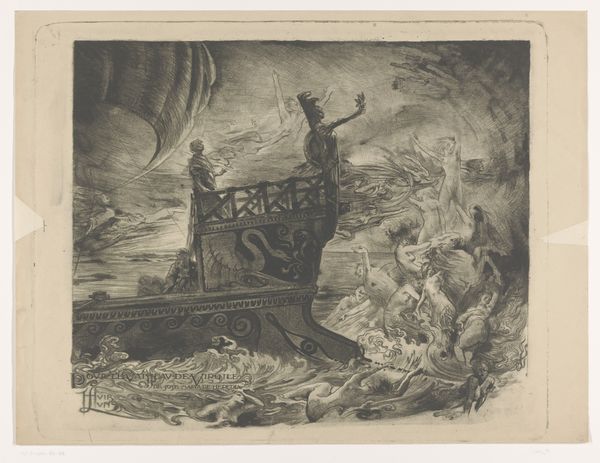
print, engraving
# print
#
landscape
#
charcoal drawing
#
figuration
#
romanticism
#
history-painting
#
charcoal
#
engraving
Copyright: Public domain
Curator: Looking at this engraving, “The Destruction of the Pharaoh’s Host,” completed in 1833 by John Martin, one is struck by its dramatic use of light and shadow. The chaos of the sea contrasts with the multitude safely on the opposite shore. Editor: My first impression is pure, unadulterated awe. The scale is just staggering, even in this print form. The sheer violence of nature is overwhelming, while the figures, trapped in the churning water, appear so small and vulnerable. It feels operatic. Curator: Indeed. Martin was known for his grandiose depictions of biblical scenes, tapping into anxieties around industrialisation and urbanization prevalent in the early 19th century. He often used mezzotint engraving to achieve these effects. Think about it - an appeal to divine power within an era fixated on industrial revolution, where old power structures start dissolving. Editor: Absolutely. Consider the composition; it’s not just a visual spectacle. Martin strategically places Moses centrally, as a focal point amidst chaos and he stands at the nexus of the human and divine, channeling an almost superhuman capacity for liberation. Where can we place that sense of empowerment nowadays, I wonder? Curator: The figures drowning clearly evoke a very powerful, perhaps unsettling, visual statement, and of course are deeply embedded in colonial power structures. We can't ignore the impact this representation has on identity formation. Editor: That’s precisely why it’s still so potent today. This scene speaks to those enduring struggles, reflecting power imbalances across lines of race, class, and nation. We read this not just as a historical artifact, but as a document that shapes understanding even in our contemporary struggles for justice. Curator: Right, looking back now, I see much more that contributes to this reading – seeing the history of this image through the lens of intersectionality really enhances our perspective. Editor: And the next time the old masters are discussed, hopefully this sparks the realization that we really have to place such influential pieces in the contexts that affect the now.
Comments
No comments
Be the first to comment and join the conversation on the ultimate creative platform.
